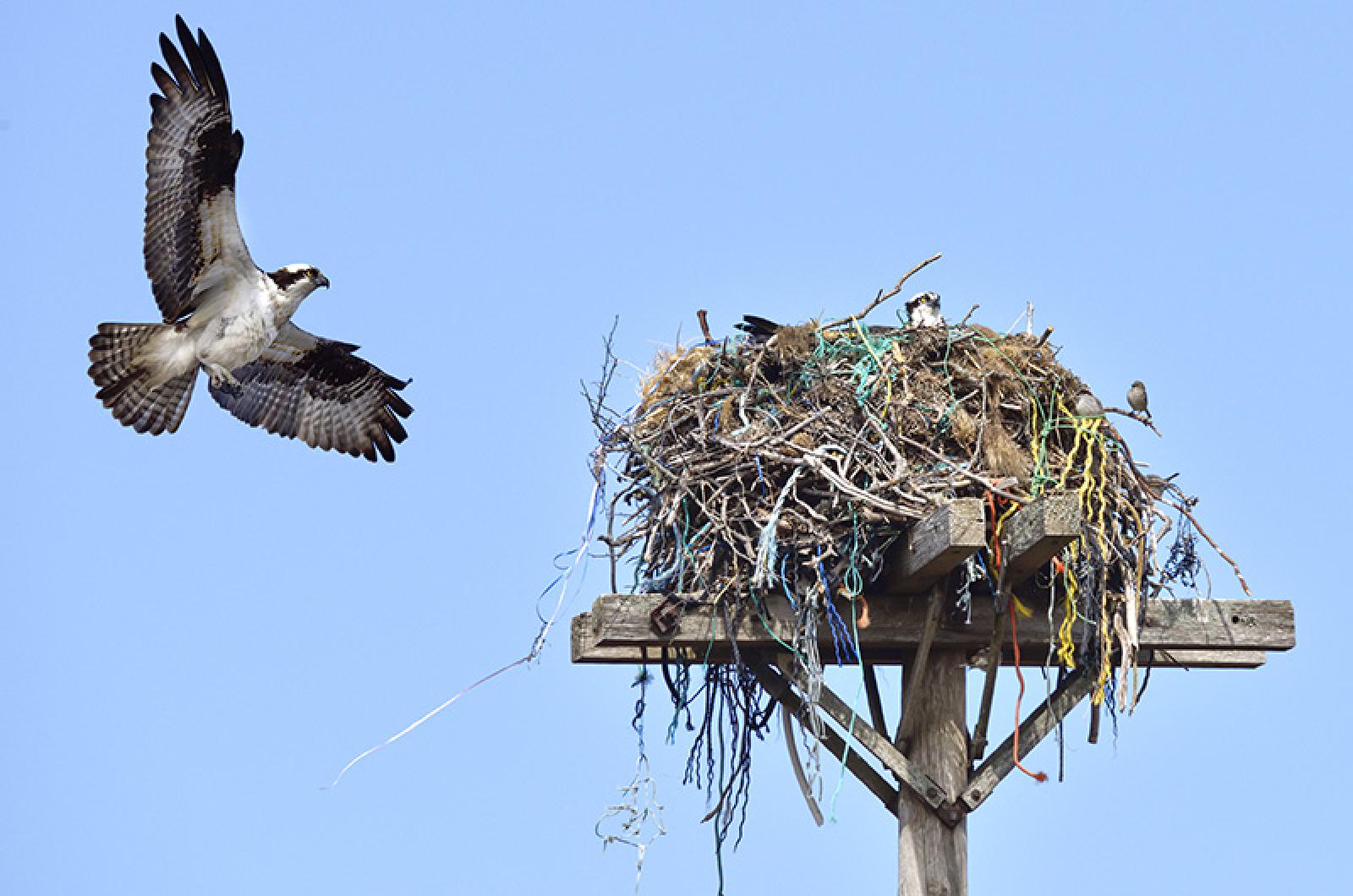There is a building boom on the Island.
Don’t expect to see new apartments, high rises, or condos going up in your neighborhood. The construction crews busy at work are of the avian variety — birds are building shelters to support their coming broods.
Nests are miracles of materials, skills, and siting, and birds are experts at creating a perfect place for their eggs and offspring. Nests provide support, insulation and camouflage for the next (or nest) generation. While birds may or may not need our help in their endeavors, many folks want to lend a helping hand.
And while sometimes we can be of assistance in feathering the nest, we also must be mindful of fouling it.
We all want to assist wildlife, and bird lovers often offer building materials to support the labors of our feathered friends. However, sometimes these efforts can do more harm than good.
Some contributions can be very helpful for nest-builders. Natural ones make great offerings — twigs, leaves, dry grasses, plant fluff or down (think milkweed or cattail), moss, bark bits, and pine needles are useful items. So don’t clean up the yard too much.
Birds species can have unique nest needs. Great crested flycatchers employ snake skin in their nests, and hummingbirds cleverly incorporate spider silk. Mud is a welcome addition to barn and cliff swallows, phoebes and robins in building their abodes.
Other materials can be harmful to nest-building birds. A familiar assist includes putting yarn, ribbon, tinsel, or plastic strips into a mesh bag, whisk, or suet feeder. These items are all generally a no-go. Yarn can include dyes and may not be natural fibers (think polyester), which can introduce chemicals or plastics into the bird’s world. The bright yarn’s colors can also give away an otherwise well-camouflaged nest and assist predators in finding eggs and young. You can offer yarn that is wool or organic cotton, but be sure to cut to lengths of about two inches so as not to choke or tangle a bird.
Another favored item, dryer lint, can also be harmful. While it seems so soft and comfy when it comes off of your lint screen, once it is incorporated into a nest and gets wet, it can become hard and even crumble. Adding to the concern are the detergents and plastic microfibers that shed from your clothes.
Human and pet hair are also often presented. Human hair can be too long for use, and can inadvertently strangle birds or wrap around their legs and injure or isolate them if they become unable to leave their nest. Pet hair is good only if your animal is not treated for ticks or with other insecticides.
Suzan Bellincampi is executive director of the Felix Neck Wildlife Sanctuary.




Comments
Comment policy »